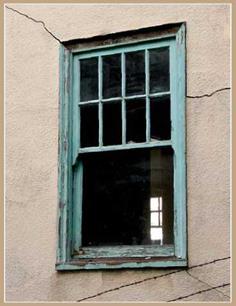WINDOWS AND DOORS
Is there flashing over doors and windows? If not, suspect water damage behind.
Examine windows and doors very carefully. Are frames solid? Deteriorated window sashes should be replaced, creating costs that quickly add up. Also inspect doorsills and windowsills, which are rot prone if water collects there.
Before replacing them, you’ll first need to improve drainage.
Carefully inspect doors for fit and function. Look for signs of warping, sagging, or separation between rails and stiles. Examine the jambs of exterior doors for damage from abuse, changing the hardware, or even forced entry.
Doors and windows badly out of square suggest a house that has shifted and may still be shifting. This can result from poor drainage and an inadequately sized foundation.
Diagonal cracks running out from the upper corners of windows or doors may telegraph big trouble. Building loads often concentrate on a header—a load-bearing member over a door or window opening—and diagonal cracking may be a sign that the header is not adequately supported. That is, the house’s framing or foundation may be shifting. Get a structural engineer’s opinion on this.
|
|
Swollen or rotted basement windows will need to be replaced with durable all-vinyl units. But first you’ll need to attend to drainage problems that have allowed water to collect.
Walk around the house. Although you will be able to see more of the foundation inside, damp basements and cracked foundations are often caused by faulty drainage outside.
Does the ground slope away from the base of the house? Or would runoff from the roof collect next to the building? Is the soil damp or compacted next to the house? Although drainage may seem a minor factor, faulty drainage can cause wet basements and even foundation failure.
Where do downspouts empty? Is runoff carried away from the house by drainpipes or, at very least, are there splash blocks beneath downspouts to direct water from the foundation?
Mark the positions of foundation cracks on your graph paper, especially cracks greater than!4 in. Also look for signs of foundation settling or
leaning around downspouts, water sources, and areas on the uphill side of the house.
Inspect chimney bases closely, both where additions join the main house and where loads concentrate on foundation bearing points. If there’s cracking where the chimney base joins the main house foundation or if the chimney base is tilting, it may be undersize and need replacing.
Do bushes or dirt touch the siding? If so, prod the siding and splashboard with your pocketknife. If soft, that area is retaining a lot of moisture.
Dirt can also be an avenue for termites, so look for the telltale dirt tubes that termites construct, further discussed on p. 170.
Armed with your outdoor observations, go inside. Start with attics and basements. Most vulnerable to the elements, they are prime places for serious house problems.









Leave a reply